The Crown of Thorns is a beautiful succulent that produces colorful flowers and is relatively easy to care for. Growing Crown of Thorns in pots requires some special consideration, but it’s not as difficult as you think. It gets its name from the sharp, thorn-like spines that cover its stems. Growing Crown of Thorns in pots is an easy way to add texture and visual interest to your garden.
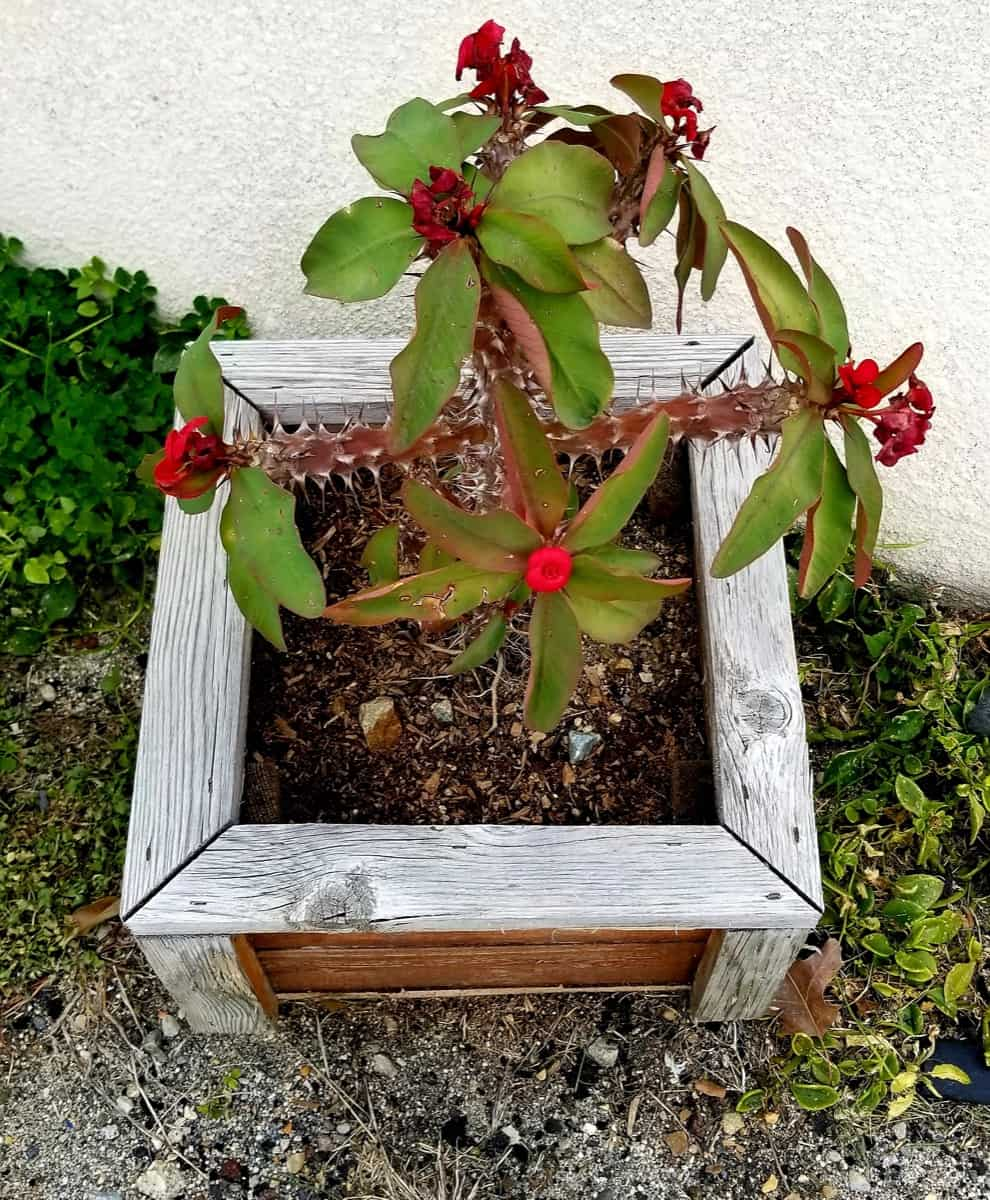
With minimal care and a few simple tips, you can have beautiful blooms all summer long. Whether looking for something that will thrive in full sun or partial shade, these succulent plants will bring beauty wherever they grow. The plant has a long tap root that can reach deep water sources, making it ideal for growing in dry climates.
Crown of Thorns is also tolerant of poor soil conditions and can be grown in various pot sizes. The plant produces vivid red flowers that bloom throughout the year, making it an attractive addition to any indoor or outdoor space. Crown of Thorns is also known for its low maintenance requirements and ease of care.
How to grow and care for the Crown of Thorns in pots
Types of the Crown of Thorns
Short and Sweet
As their names suggest, the main difference between these types is their height. Short Crown of Thorns plants typically grows about 2 feet tall, while sweet Crown of Thorns can grow up to 4 feet tall. Both types of Crown of Thorns make excellent houseplants, but if you’re looking for something that will add a bit of extra height to your space, then a sweet Crown of Thorns is the way to go. The Short and Sweet Crown of Thorns plants are perfect for growing in pots. They have a compact growth habit and produce abundant beautiful, brightly colored flowers.
Maxi Zephyr
Maxi Zephyr is characterized by its large, fleshy stems and bright red flowers. Maxi Zephyr Crown of Thorns is a popular choice for potting because they are relatively easy to care for and makes an attractive addition to any home or garden. With proper care, Maxi Zephyr’s Crown of Thorns can thrive for many years in pots.
Maxi Pink Cadillac
A Maxi Pink Cadillac is a Crown of Thorns typically used for decorative purposes. They are often found in pots and are known for their showy, pink flowers. While they are not the most durable type of Crown of Thorns, they can add a touch of elegance to any setting. The Maxi Pink Cadillac is an easy plant to care for and is perfect for anyone looking for a low-maintenance plant to add to their collection.
Red Gundula
The Red Gundula has red flowers and thorns. It is a beautiful plant that can add color to any home. This type of Crown of Thorns is easy to grow and care for. Red Gundula is a type of Crown of Thorns often used in pots. This plant has long spiny stems with bright red flowers. The Red Gundula is a hardy plant that can tolerate full sun and dry conditions.
In case you missed it: 18 Best Vegetables to Grow in Buckets: Planting to Care for Beginners
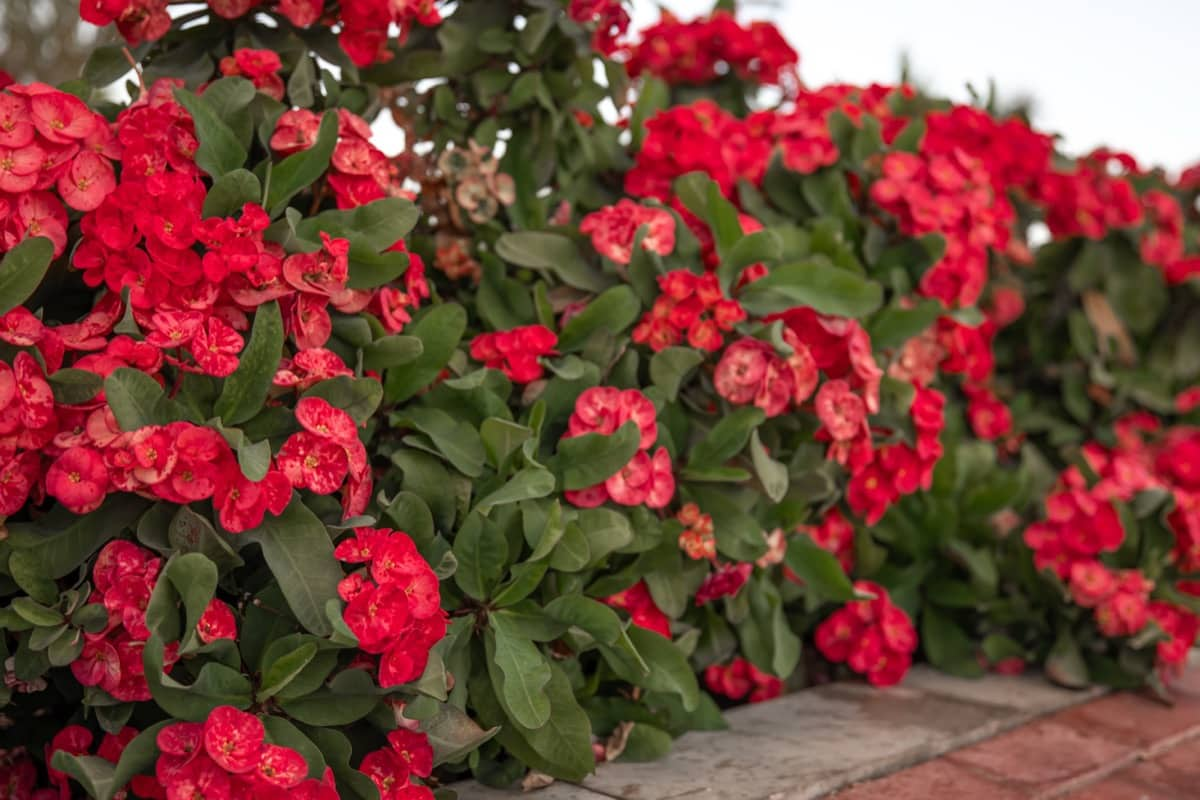
Brush Fire
The Brush Fire is the most common type, and its small size and dense growth characterize it.
Creme Supreme
Creme Supreme is a type of Crown of Thorns often used in pots. This plant has dark green leaves and produces small, white flowers.
California Hybrids
Crown of Thorns is a beautiful, unique plant that makes an excellent addition to any home or garden. There are many different types of the Crown of Thorns, each with its distinct appearance and set of benefits. One popular type of Crown of Thorns is the California hybrid. California hybrids are known for their large, showy flowers. They come in various colors, including pink, red, purple, and white. They are also relatively drought-tolerant, making them a good option for those in dry climates.
Soil requirement for the growing Crown of Thorns in pots
You can find potting mixes designed explicitly for cacti and succulents at your local nursery or garden center. Or, you can make your mix by combining equal parts of sand, perlite, and peat moss. If you choose to make your mix, sterilize the ingredients before use. When it comes to the growing Crown of Thorns in pots, the best soil to use is a well-draining cactus mix or sandy loam. If you’re using a store-bought potting mix, you can add some gravel or sand to help drainage. The Crown of Thorns is native to arid regions, so they don’t need a lot of moisture.
Climate suitable for the growing Crown of Thorns in pots
Crown of Thorns is a popular houseplant known for its vibrant flowers. The plant does best in bright light and needs to be protected from drafts. The plant also needs well-draining soil and should be watered regularly. The climate is essential regarding the growing Crown of Thorns in pots. The plant does best in warm weather and can tolerate some drought. However, it is not tolerant of frost.
In case you missed it: How to Grow and Care for Brussels Sprouts in Containers: Step-By-Step Planting Process for Beginners
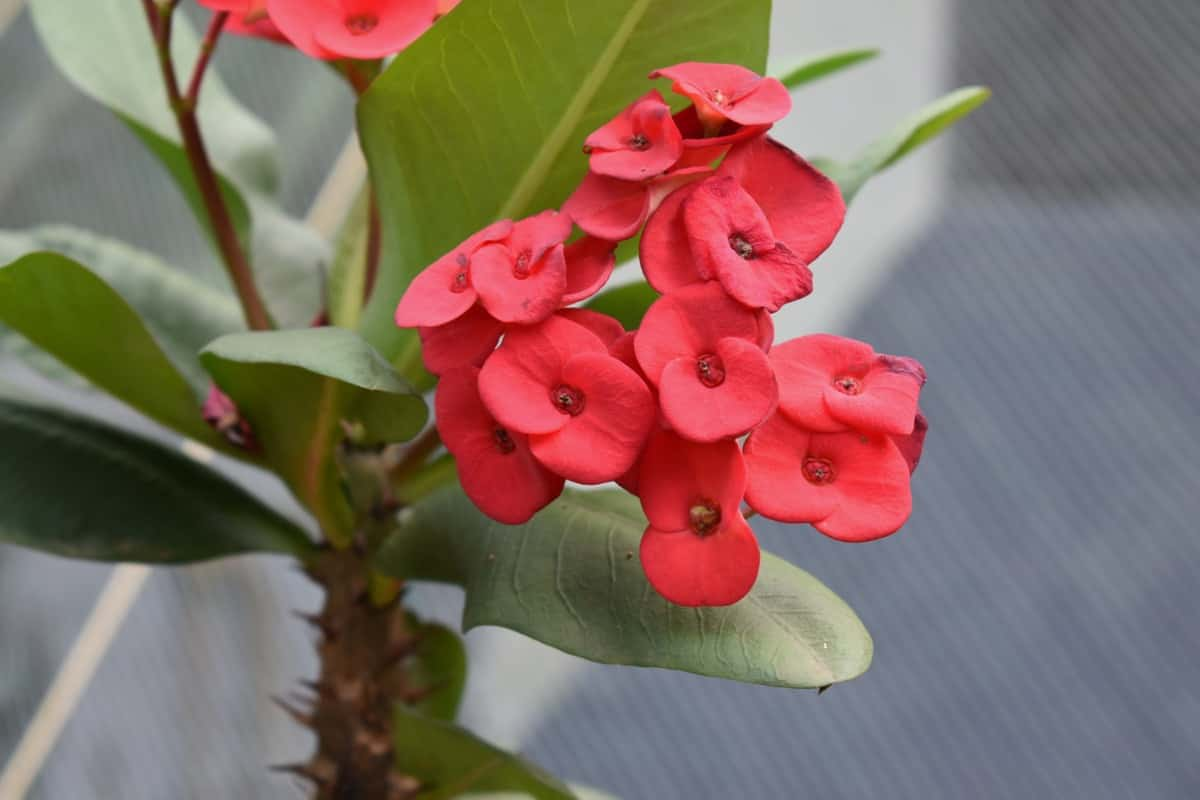
If you live in a cold winter, you will need to bring your potted plant indoors or grow it as an annual. The ideal temperature range for the growing Crown of Thorns is between 21 to 29°C. The Crown of Thorns can be grown as a houseplant in areas that do not experience freezing temperatures. The plant prefers warm temperatures and will not thrive if the temperature drops below 16°C. If you live in an area with cooler winters, you can grow Crown of Thorns in pots and bring the pots indoors when the temperature drops.
Water requirement for the growing Crown of Thorns in pots
When watering, allow the soil to dry out completely before watering again. Water deeply, but not too frequently. You may need to water once a week or less during the hottest summer months. In cooler months, every two weeks should be sufficient.
The Crown of Thorns is a drought-tolerant plant; however, it will grow faster and produce more flowers if given enough water. During the active growth period, water the Crown of Thorns deeply and regularly, allowing the soil to dry out somewhat between watering. If you are growing Crown of Thorns in pots, use a well-draining potting mix and bottom water or a drip irrigation system to avoid root rot.
Pot suitable for growing Crown of Thorns
As the Crown of Thorns matures, you’ll need to provide a larger pot. A container 18-24 inches in diameter will be suitable for a mature plant. Choose a pot with drainage holes to prevent the roots from becoming waterlogged. You can keep your plant outdoors year-round if you live in a frost-free climate. However, if you experience freezing temperatures, you should bring your plant indoors for the winter months.
In case you missed it: Key Rules to Grow and Care for Patchouli: A Beginners Garden Guide
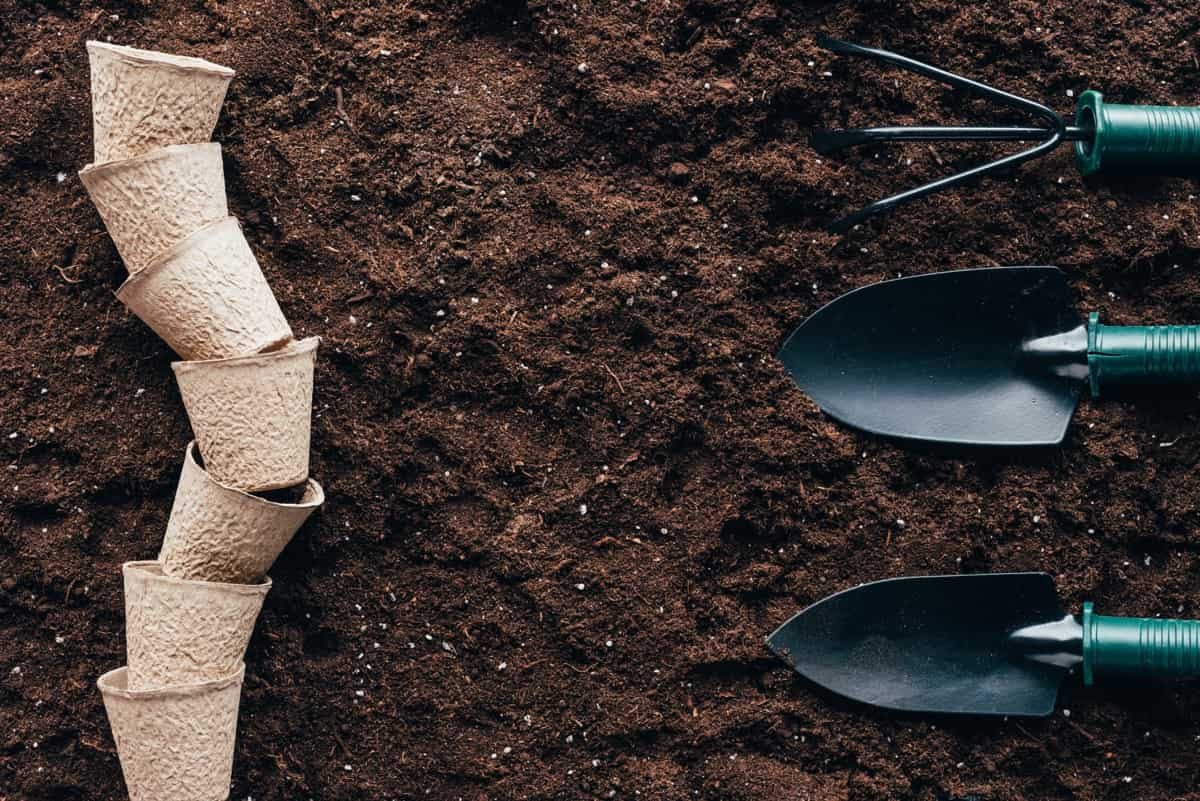
Propagating Crown of Thorns
Propagating a Crown of Thorns plant is not difficult but does require patience and attention to detail. This plant can be a rewarding addition to any garden or home with the right care and maintenance. The beautiful flowers are sure to bring smiles to your home, making it well worth putting in the effort required for proper propagating. If you’re interested in propagating the Crown of Thorns plant, you need to know a few things.
First, it’s best to propagate the Crown of Thorns in the spring or summer when the plant is actively growing. Second, take cuttings about 4-6 inches long and remove any leaves from the bottom half of the cutting. Next, allow the cuttings to callus by placing them in a dry spot for a few days. Once the cuttings are callused, insert them into a well-draining potting mix and lightly water. Keep the soil moist; you may see new growth within a few days.
Crown of Thorns plant care
Fertilizer requirement for the growing Crown of Thorns in pots
To fertilize the Crown of Thorns, you’ll need to purchase a high-phosphorus fertilizer. Phosphorus is key for encouraging blooming in plants. When you’re ready to fertilize, water the Crown of Thorns at its base and avoid getting any fertilizer on the leaves. Fertilizer requirements for the Crown of Thorns are not complicated. Be sure to follow the application rates on the fertilizer label, as too much fertilizer can burn the plant’s roots.
The Crown of Thorns is a drought-tolerant plant, so it does not need a lot of water. Watering should be done deeply and less frequently to encourage deep-root growth. If your Crown of Thorns plant is not growing as vigorously as it should be or if the leaves are yellowing, this signifies that the plant is not getting enough nutrients. Try using a higher-quality fertilizer or applying it more often.
Pruning Crown of Thorns plant
Pruning Crown of Thorns is important in keeping your plant healthy and looking its best. With proper care, your Crown of Thorns will thrive for many years. Crown of Thorns can be pruned at any time, but spring or summer is the best time. Remove any dead, diseased, or damaged leaves or stems as soon as you see them.
In case you missed it: How to Grow and Care for Pansies in Containers: A Beginners Guide
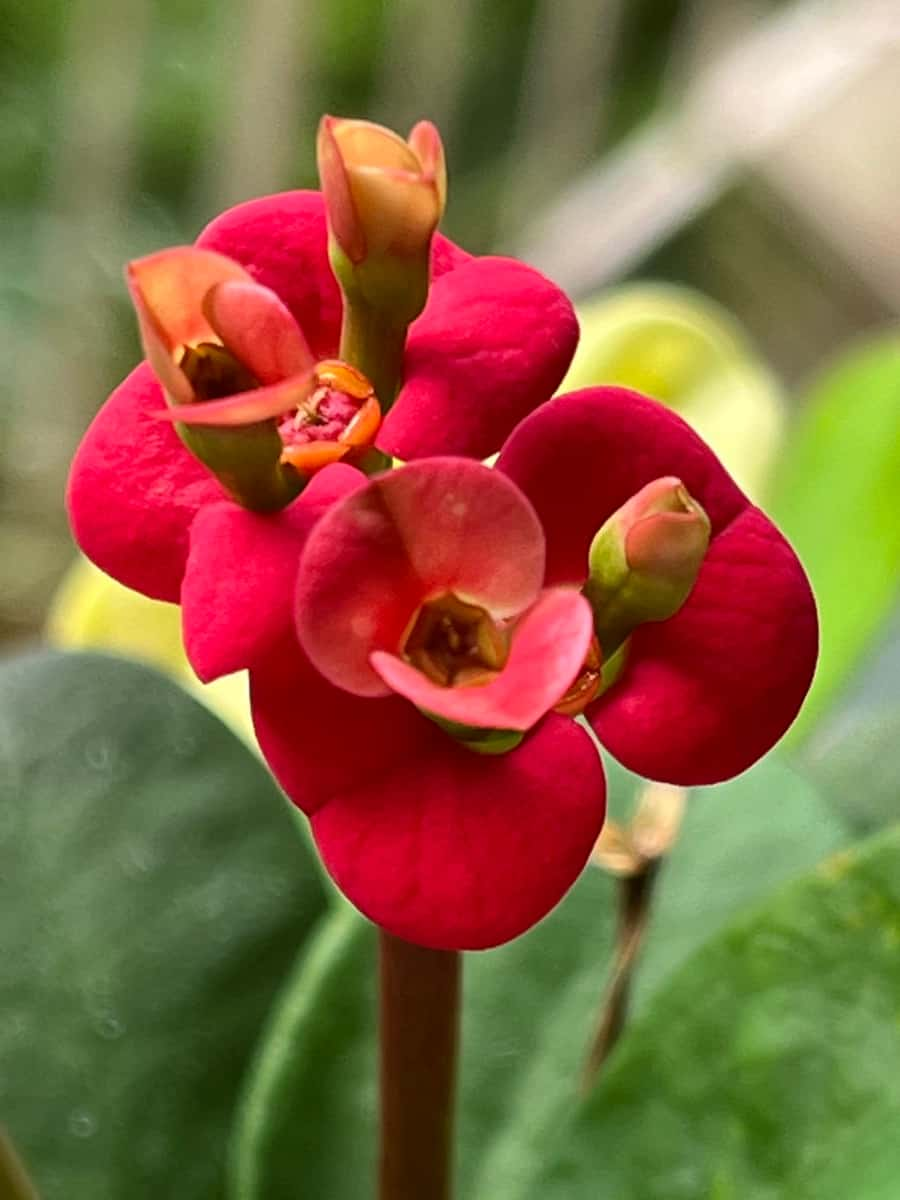
Cut this back to just above a healthy bud or leaf node. You can also remove any excess growth crowding the plant or taking away from its overall appearance. Prune this back to a desired shape or size. After pruning, it’s important to fertilize your plant to encourage new growth. Use a balanced fertilizer specifically designed for the Crown of Thorns plants.
Pests and diseases of the Crown of Thorns and their control
Crown of Thorns is a beautiful but prickly succulent popular in warm climates. The Crown of Thorns does best in bright light but can tolerate some shade. It needs well-drained soil and does not like to sit in wet soil. The Crown of Thorns is susceptible to mealybugs and spider mites. Mealybugs are small, white insects that suck the sap out of plants. They can be controlled with an insecticidal soap or horticultural oil.
Spider mites are tiny spider-like creatures that spin webs on the undersides of leaves. They can be controlled with insecticidal soap, neem oil, or horticultural oil. Fusarium wilt is a disease that affects the roots and stems of the Crown of Thorn plants. The plant will appear wilted and discolored, and the leaves will eventually drop off. Water the plant deeply but less frequently to control this disease and avoid over-fertilizing.
Powdery mildew is another common disease of the Crown of Thorns. This fungal disease causes the leaves to become covered in a white, powdery substance. It can be controlled by increasing air circulation around the plant and spraying the leaves with a fungicide. Gray mold is another fungal disease that can affect the crown of thorn plants.
This disease appears as gray or brown spots on the leaves, which eventually turn black and cause the leaves to disintegrate. Gray mold thrives in humid conditions, so keeping the area around your plant well-ventilated is important. You can also treat gray mold by spraying the affected areas with a fungicide.
In case you missed it: How to Grow and Care for Verbena in the Garden: A Beginners Guide
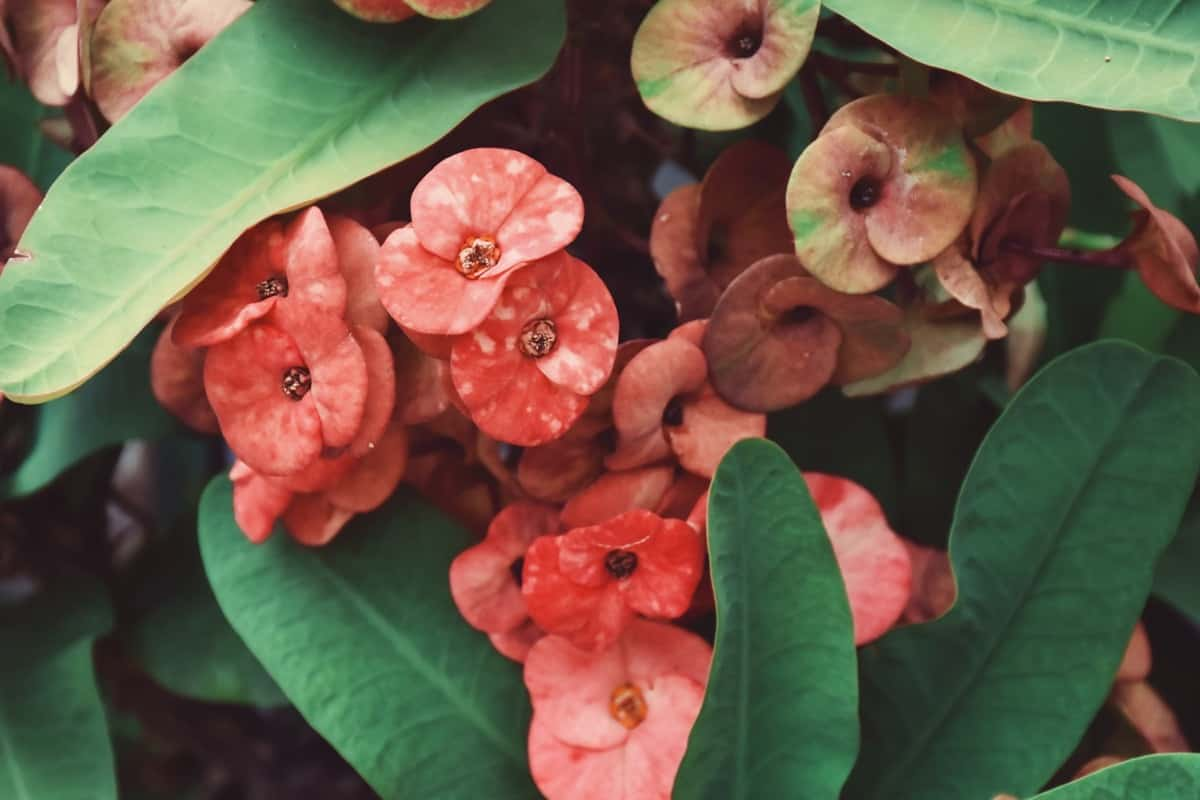
Conclusion
Crown of Thorns can be quite rewarding to grow in pots if you have the correct information and potting medium. With proper care, your Crown of Thorns will flower for many years with just a little effort from you. These plants make great additions to container gardens and balconies as they are not too demanding and are proud colorful blooms that keep coming back year after year.
- Flower Garden Designs and Layouts for Beginners
- Planting and Spacing Techniques in Papaya: A Beginner’s Guide
- Growing Gold: Essential Techniques for Planting Pineapples
- How to Make Kalanchoe Plant Bushy: Home Remedies and Solutions
- 11 Reasons Why Your Gardenia is Not Blooming: Home Remedies and Solutions
- Eco Elegance: The Guide to Designing a Drought-Tolerant Landscape
- Gardening on a Slope: Strategies for Hillside Landscaping
- Nourish and Flourish: Top Organic Mulches for Thriving House Plants
- Everything You Want to Know about Indian Mogra Flower: Discover Uses and Growing
- Green Thumb Success: Expert Tips for Cultivating Greenhouse Pumpkins All Year Round
- Maximize Growth & Flavor: The Ultimate Guide to Companion Planting in Herb Gardens
- How to Control Rhododendron Problems Naturally: Home Remedies and Organic Ways to Fix Them
- Natural Magic: The Remarkable Benefits of Cinnamon for Plants
- Best Steps to Revive Dying Tulip with Natural and Organic Treatment
- 10 Reasons Why Your Angel Trumpet is Not Blooming: Remedies and Treatment
- How to Fix Periwinkle Leaf and Flower-Related Problems: Natural Remedies and Solutions
- How to Fix Zinnias Leaf and Flower Problems: Discover Natural and Home Remedies
- Organic Steps to Induce Lemon Tree Flowers: A Comprehensive Guide
- Bloom Booster: Crafting the Perfect Homemade Bougainvillea Fertilizer
- Optimizing Growth: A Guide to Applying NPK Fertilizer for Potted Plants
- 10 Best Homemade Fertilizers for Rubber Plant: DIY Recipes and Application Method
- How to Boost Female Pumpkin Flowers: Effective Steps for More Flowers and High Yields
- Transform Your Indoor Garden: Top Benefits of Pink Salt for Houseplants
- 10 Best Homemade Fertilizers for Peacock Plants (Calathea): Easy DIY Guide
- Unlock Blooms: 9 Reasons Why Your Potted Chrysanthemum is Not Blooming
- 8 Reasons Why Your Potted Hibiscus is Not Blooming: Fix it with Simple Solutions
- Unlock Blooms: 9 Key Reasons Your Potted Frangipani Won’t Flower
- 10 Reasons Why Is My Ice Plant Not Blooming: Remedies and Treatment
- 10 Reasons Why My Potted Hydrangea Not Blooming: Treatment and Remedies
- 10 Reasons Why is My Wisteria Not Blooming: Remedies and Treatment
- 10 Reasons Why is My Goldfish Plant Not Blooming: Remedies and Treatment
- Maximize Your Space: Ultimate Guide to Balcony Gardening with Grow Bags
- 10 Reasons Why Your Iris is Not Blooming: Remedies and Treatment
- 10 Reasons Why Your Anthurium Plant is Not Blooming: Treatment and Remedies
- 10 Reasons Why Your Aquaponic Plants Are Not Flowering: Remedies and Treatment
- 10 Reasons Why Your Agapanthus is Not Flowering: Remedies and Treatment